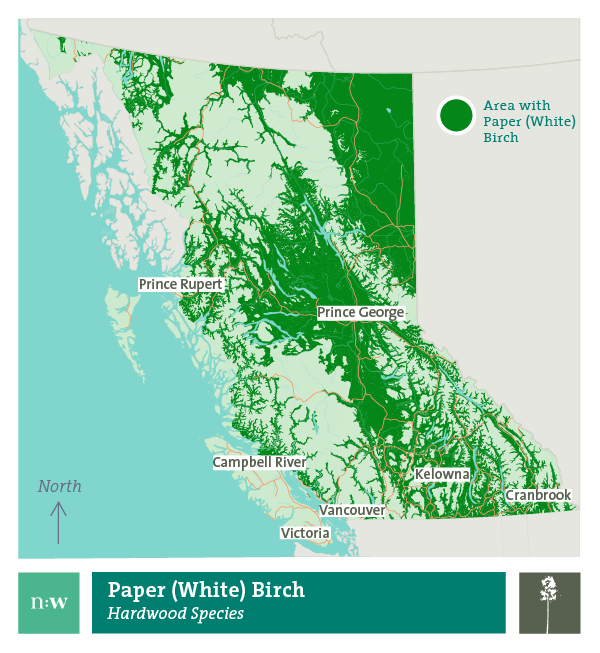Paper birch, also known as white birch, is used for lumber, veneer, plywood and pulpwood, and its smooth uniform texture makes it a popular choice for household items, toys and products such as wooden spoons and toothpicks.
Paper birch is a small- to medium-sized deciduous, broadleaf tree found throughout the interior of British Columbia (B.C.). It is easily recognized by thin, white to reddish-brown bark that peels in papery strips. Its high-value lumber is used for furniture, cabinets, flooring and other millwork items. Since the wood has no odour or taste, it is ideal for short-use recyclable items such as disposable plates and cutlery.





